What do you know about drought tolerant succulents? Generally succulents are resistant to drought conditions.
They are generally too easy to grow plants and require easy maintenance. They have naturally made their own water conservation method which helps to thrive them in these conditions.

Are succulents drought tolerant?
The leaves of the succulents are generally fleshy, thick. You could spot them with swollen stems which conserve water. The name sucus has formed from the words juice or sap.
Succulents have got the ability to stay alive in limited water conditions such as mist, and in dew. That helps to make them survive in these intense warmer conditions.
We could see numerous kinds of species and varieties of succulents which belong to different plant families. However, many people are happy to handle plants in the Cactaceae family.
Why should you choose drought tolerant succulent?
There are several reasons as to why we should choose drought tolerant succulents to grow. They are as follows,
Succulents can create the illusion of water. Some examples for that are cactus pads which resemble the lily pads, the blossoms which emerge from Graptoveria rosettes. Apart from that, Othonna capensis spill from the overturned jugs above as the actual water would do.
Their naturally formed defense system is one more reason why we should choose a drought tolerant succulent. They have been well prepared and structured naturally for drought conditions.
Their magnificent varieties available is one more reason as to why we should grow drought tolerant succulents. Succulents generally survive in their good looks all year round. They will look cute in different sizes as well as in different shapes. . For example, Agaves , Aloe Brevifolia come up in colonies. On the other hand, plants like Graptoveria, Fre Ives. form powder-colored leaves .
They can bear most abuse apart from gophers. Gophers could harm plants like Agave Americana. Due to drought conditions, gophers could also get thirsty and could harm the plants.
Cuttings could survive for several years without water. For example, we could take Echeveria ‘Lola” , it could survive without roots, water or even soil for approximately three years. They can live off moisture in their leaves even if they lose their roots.
They are great picks for dry bouquets. A combination of wired rosettes along with cuttings with dried flowers and greens would be a great combination for a dry bouquet which could survive without water.
They are good mixers. There are succulents which could co exist with different types of succulents. They could even prevail in oaks too. Summertime is a perfect time to plant them and it is completely contrary to other plants in that aspect.
You should avoid watering at the very moment you plant them. Over time,you should do periodic watering, when the weather is hot, and dry and when they are in their actively growing season.
Drought and heat tolerant succulents
Agave attenuate
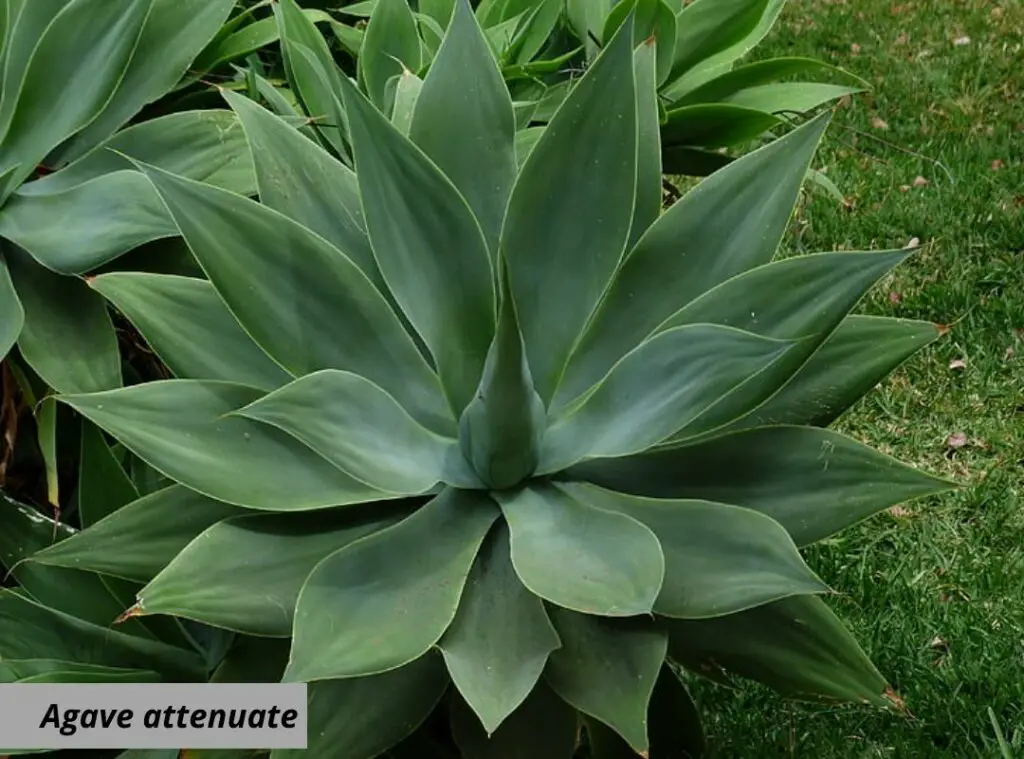
Agave attenuata is a staple found in many southern California gardens. They are easy to care for. Large agave attenuata are relatively little expensive to purchase.
Having said that, if you have someone who is willing to provide you with a rosette , what you have to do is to simply stick it in the garden.
Make sure that you provide it with adequate room when you plant the rosette as it could clump into plants of 6 inches in width during a few years.
On the other hand , you could keep cutting and transplanting them in some other area if you wish.
Agave A. can thrive in clay soil and you could use it as a houseplant growing in a container. Keep in mind, to provide containers where you can water them adequately and occasionally.
So that it will not dry out. Do not expose them to temperatures below 30°F. They would enjoy the sunlight, but they could withstand the shade as well.
Aeonium arboreum
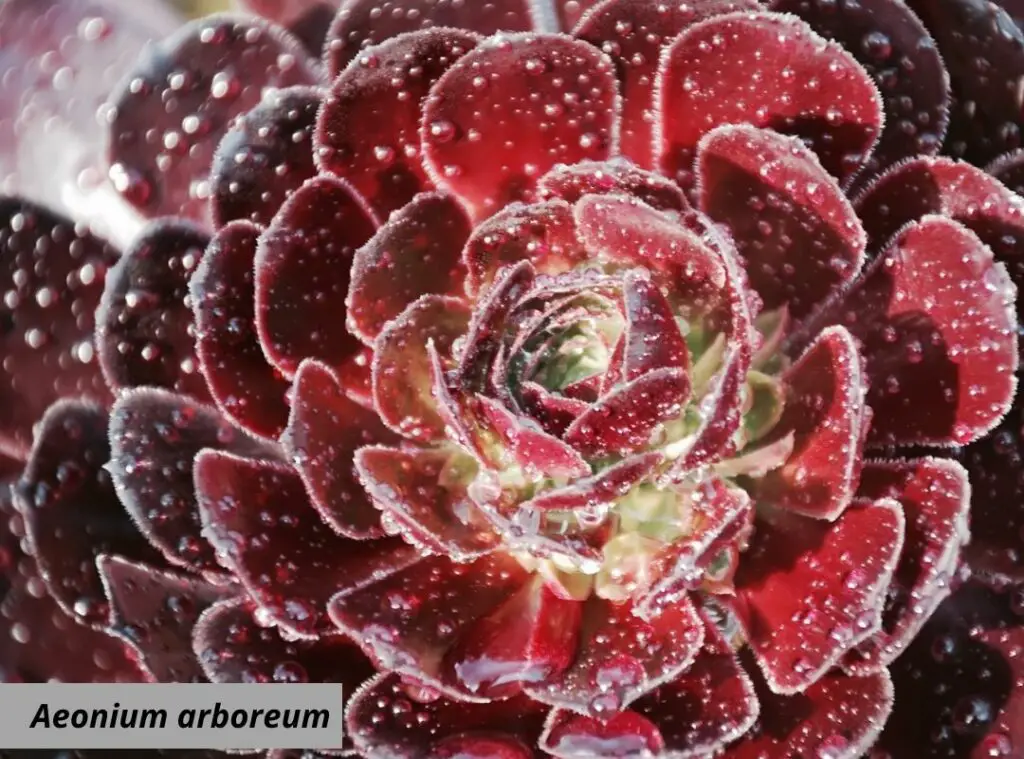
Aeonium arboretum would perform well in areas like San Diego. You could transplant them easily.
However it will be difficult to keep the stems straight until the roots get stable in this process.
Aeonium arboretum come up with a different species where it will carry a green and a variegated variety. They could rise to 2-3 feet in height and in width.
Watering them occasionally will be useful to get their rosettes grown. They will be happy with full sunlight to partial sunlight while they would require through infrequent watering.
They will be safer from the deer’s. You could locate tiny sizes of them especially at local nurseries. They could be as small as 4inches.
a variegated aeonium sunburst is accountable to handle the full sunlight of the scorching sun. However they would flourish well in the yards in partial sunlight too.
Aloe aborescens
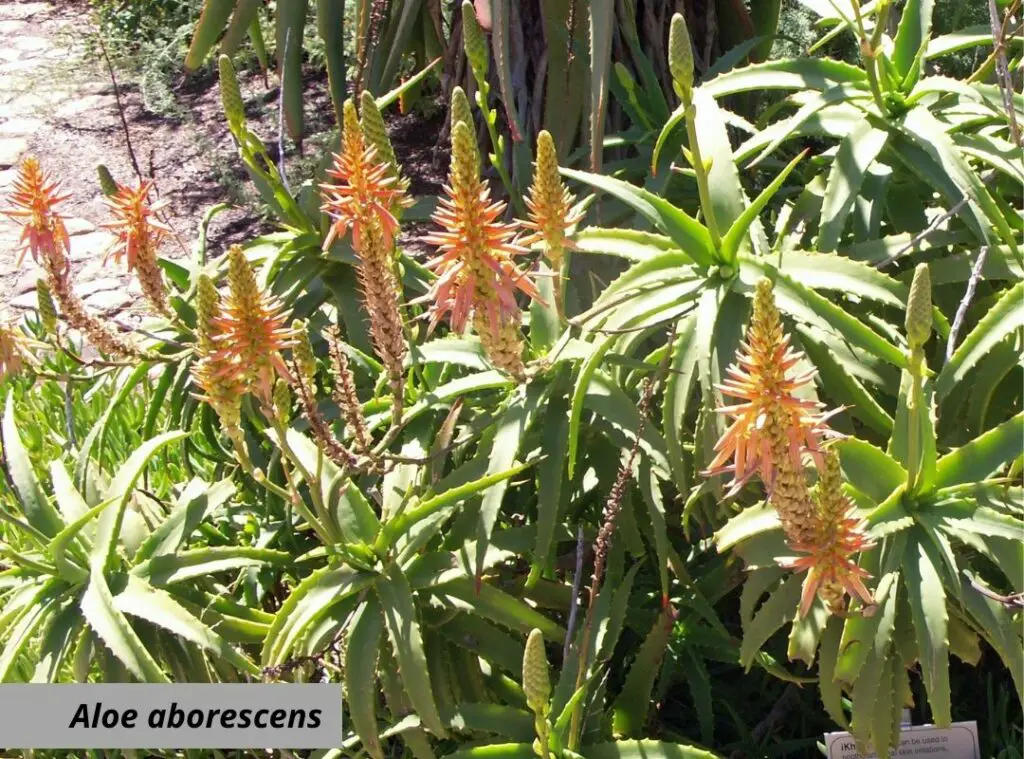
This could resist any fire , and would not require supplemental water by the coast. They are famous for saving homes as fire resistant plants during the Social wildfires.
Moisture filled leaves played a big role here. They tend to grow in shrubs with a height of 9’. Leaves will be spiky in rosettes. They could get 8 inches wider.
The color of leaves will vary based on the amount of the sunlight they get. They bloom with flame-colored flowers of 2 inches spikes.
You could spot the blossoming of Aloe A. in the fall and in early winter as well.
Since it belongs to Aloe genus, it is a plant which has a healing ability too.
Crassula ovata / Jade Plant
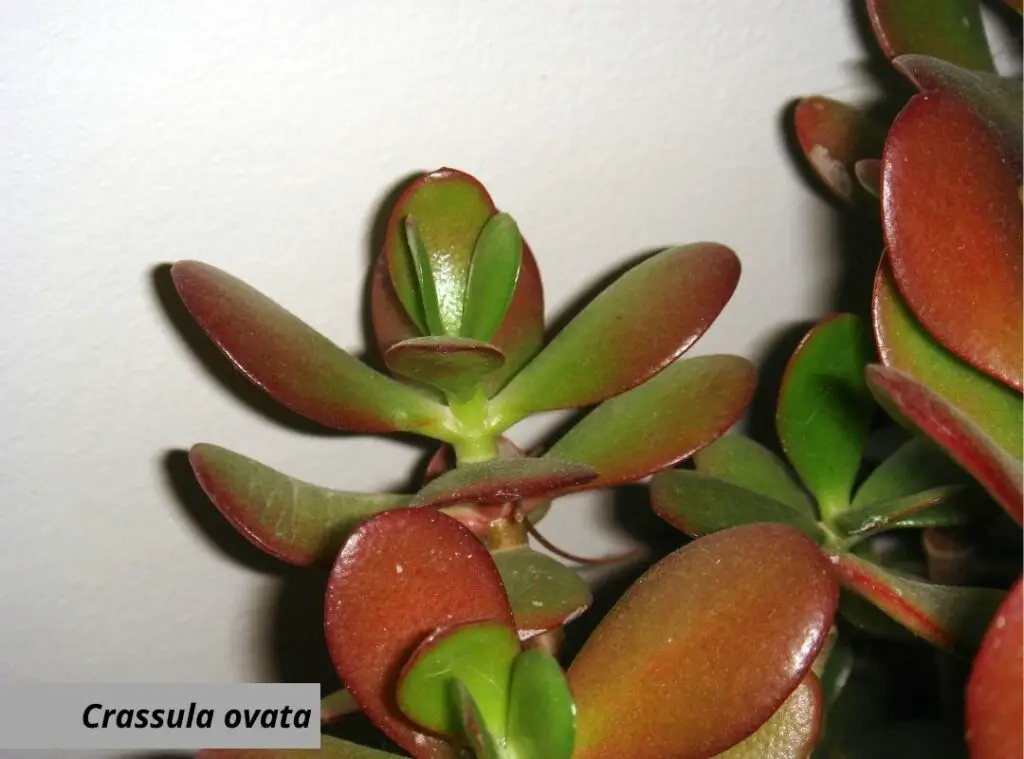
Crassula Ovata’s common name is Jade plant. This is an endemic plant in South Africa. Their leaves will be glossy, green and would be paddle shaped. You can spot them on the thick branches.
They will grow up to one foot in height while it could rise up to several feet high when you grow them outdoors.
They will manage with a limited amount of water and they hate over watering. On the other hand, there is a variegated variety of jade plant which usually performs well in perpetually moist clay soil along with full sunlight.
Easy propagation is one more interesting feature of jade plants. You could simply drop a leave on the garden and let it grow.
Some people even can prune them to bonsai too. This is a common sight especially in San Diego.
They are willing to grow on their own and do not require any maintenance from you. It will be somewhat different if you grow them in pots though.
Aeonium haworthii
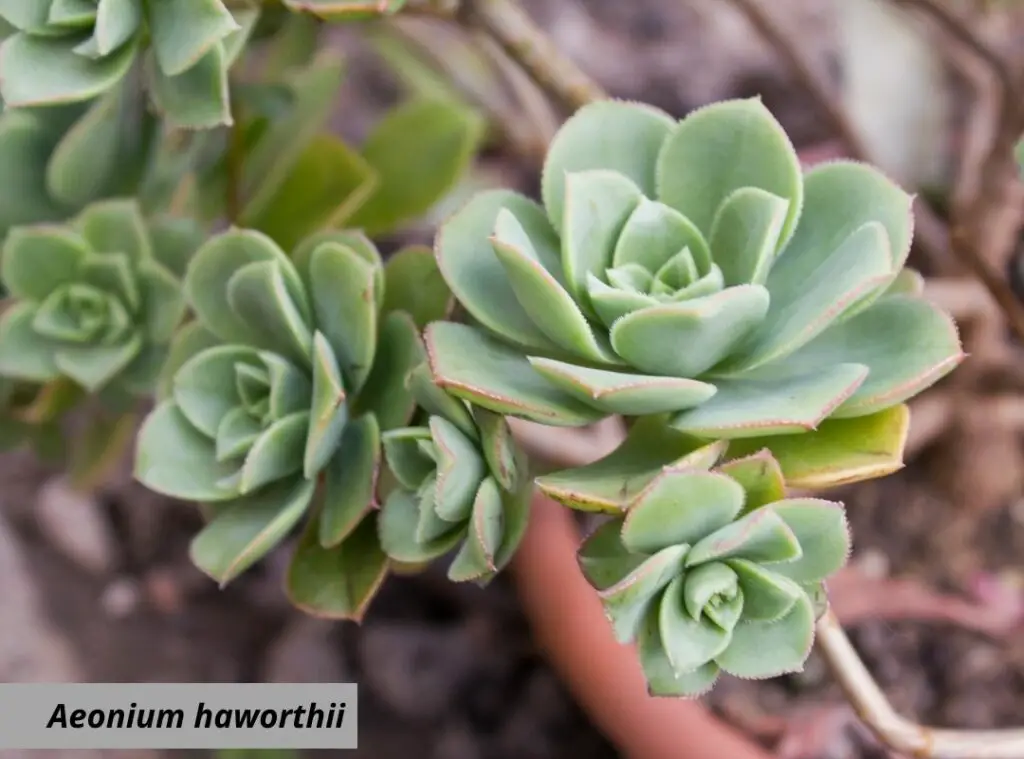
Aeonium haworthi’s variegated type kiwi tends to grow well in partial SoCal coastal shade. It contains yellow and green tinted leaves with the pink tips. They can manage a wide range of watering.
If you grow them away from the coast , if the climate is heated and drier , this could be grown in a place where it gets full shade. Rocky slopes will also be suitable as a growth place for them.
Euphorbia tirucalli
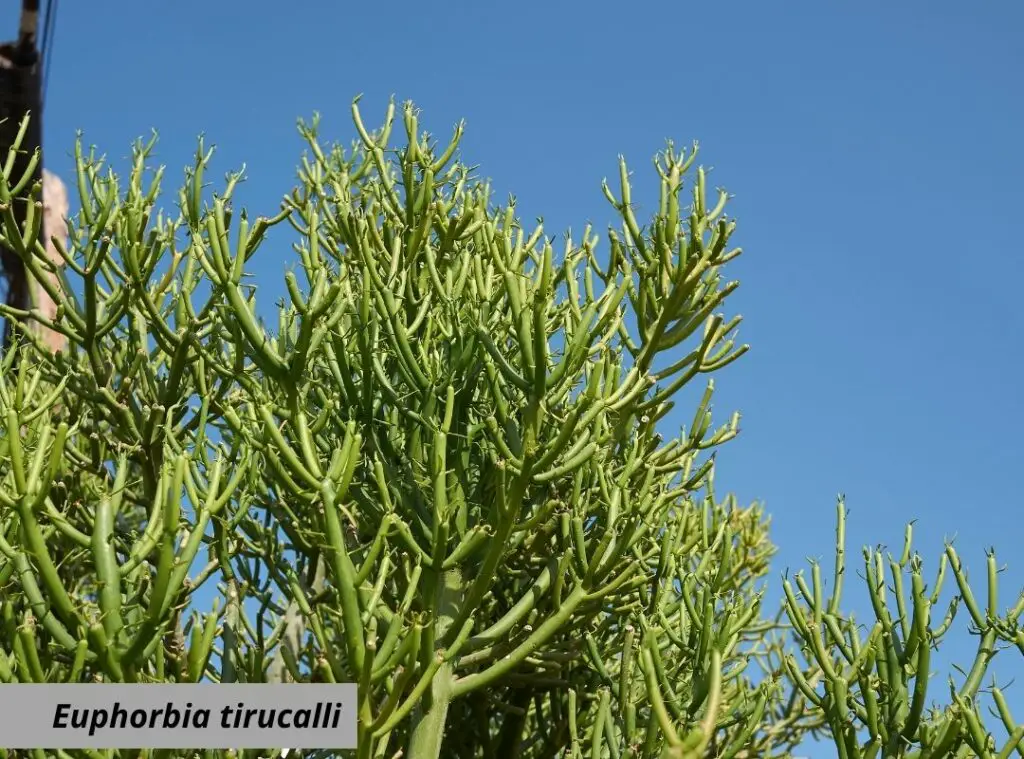
You could sometimes see this as a cactus due to its pointy branches’ formation. Fire sticks is the common name of this.
Euphorbia tirucalli is also an easy to grow plant. However You should avoid pets and kids from them as the milky residue could be uncomfortable for them.
They will get 8 inches in height once they mature and 3 inches in width too. They want Full sunlight for their proper growth and they are slow growing plants.
Echeveria agavoides
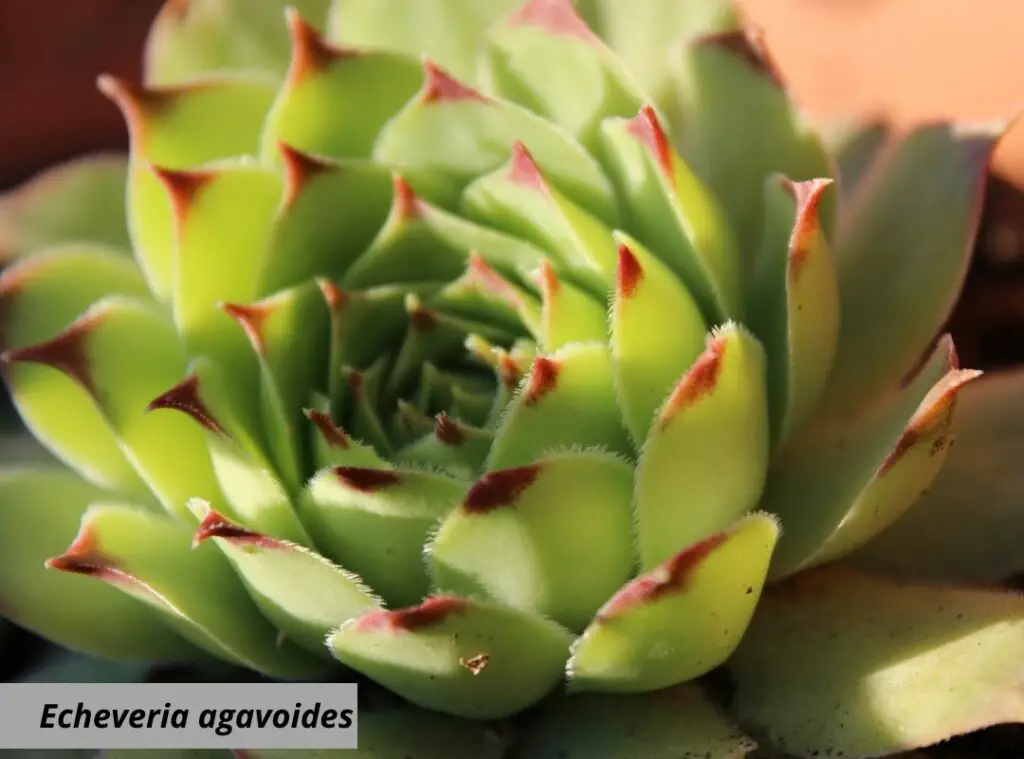
You could spot the little versions of these echeverias in green gardens, nurseries. Avoid Over watering them and ensure that you provide them with well draining soil.
They will form rosettes of 12 inches in width. You could further see red outlines on them.
Echeveria agavoides will make pups and spread on the grounds. They will form in clumps and they will be upright with the stems. Lipstick Echeveria is another name which you could call them.
Echeveria topsy turvy
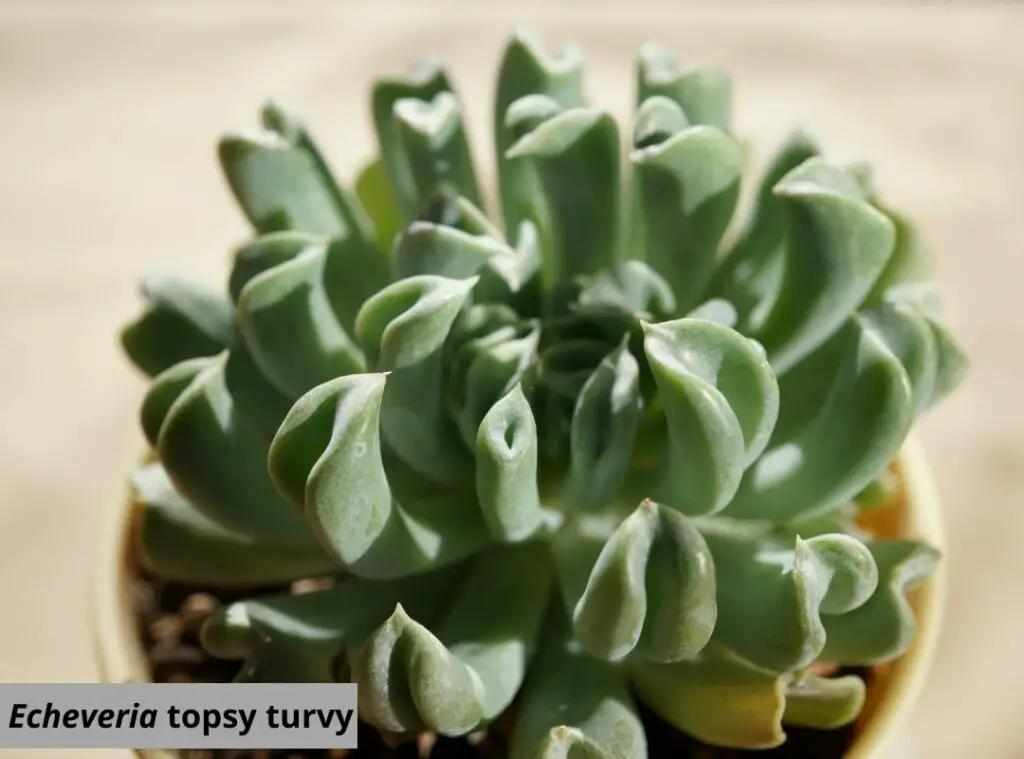
Mexico native Topsy turvy succulent’s scientific name is Echeveria runyonii and it belongs to the family Crassulaceae . It is one type of Echeveria which is a large group of succulent.
You could call this Mexican ‘Hens and Chicks’, Silver Spoons Echeveria, and Upside-Down Echeveria as well.
These are not fuzzy plants and tolerant of any environmental condition. It has pale blue succulent rosettes which grow faster outdoors on the ground. They do not have a stem too.
This will be one graceful plant once you grow them in a small container and in dish gardens too. It is a very common sight to see at least one topsy turvy succulent plant in a succulent garden.
They will be handy in using for filling in cracks in concrete walls. Further we could use them for rock gardens as well.
One important thing to mention about them is that they are deer resistant and they hardly contact any disease.
We could handle topsy turvy simply by providing the fundamental necessities of it, such as full sunlight to partial sunlight, watering appropriately, providing the correct soil type etc. They are non toxic for pets too.
Senecio mandraliscae
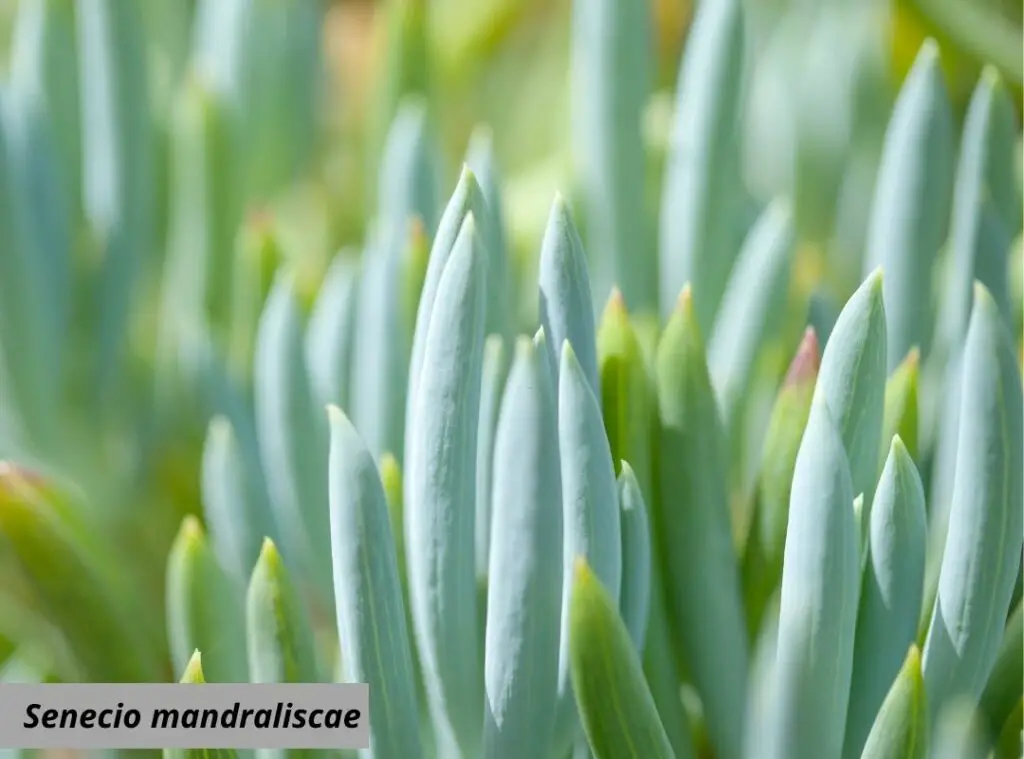
This is frequently mistaken for an ice plant. In fact, Senecio mandraliscae is a succulent type which looks similar to a basket of blue French fries. We could use Senecio mandraliscae for ground covers.
This is a plant once could afford easily and it wants only a little care from us. We need to provide them full sunlight to partial sunlight
You need to water them frequently despite they are tolerant of drought. If it is possible for you to collect some cuttings, you could plant them and see them sprout in a short period of six weeks.
Flowering could take place in spring and they are white in color. They attract bees to them very much.
Portalucaria afra
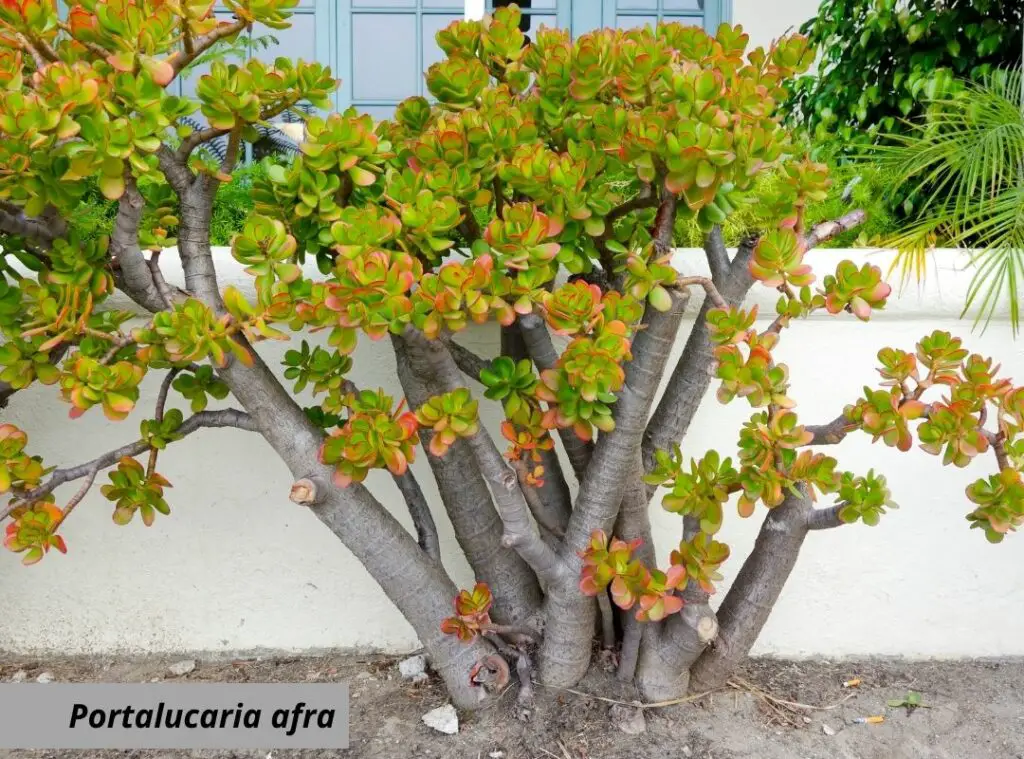
Portulacaria afra is a native plant in South Africa and its common name is Elephant bush succulent.
This usually carries small green leaves and has a stem more in reddish color. Portalucaria afra has similarities like the Jade plant.
This also requires a minimum care treatment and tends to grow well in locations where they get proper sunlight.
Their dwarf version will be quite handy to use as a ground cover. We could use this as a plant for xeriscaping since it could bear infrequent watering.
This is a quite popular home-grown plant. In habitat, elephant bush succulents could get tall up to 8 inches. In fact, elephants are fond of eating elephant bush succulents in their habitat.
Further Portulacaria afra is one of the best plants which could absorb CO2.
If you consider the elephant bush house plants they would get taller from a few feet than those which are in their habitat. These plants wish to have heated temperature and bright light as well.
What are heat tolerant succulents?
Succulents are famous as quite fascinating plants among the gardeners. Lot of people tend to grow succulents due to its easy maintenance. Furthermore, the majority of these plants are hardy plants too.
If you have allocated a small area to plant something, Succulents could fulfill your requirement. Easy propagation is one more specialty of them. They are not fuzzy and a little watering could be sufficient for them.
It could be once a week or even sometimes less than that if it is during a cold month. Most of the succulents are disease resistant and over watering becomes their major problem.
Though succulents are drought tolerant plants, this doesn’t necessarily mean they love the heat.
If you wish to have succulents which could bear a longer period of extreme heat here are some of the plants which we could use.
Should drought tolerant succulent be kept inside the house?
You could place the drought tolerant succulents indoor as they would survive in warm, dry climates.
The ability to conserve water is as to why they could survive those conditions. You can leave them ignored for sometime too. It won’t do any harm for them.
These characteristics make them well-adjusted for indoor growing conditions.
On top of that, if you do not have a longer time to spare on gardening, this will be the plant you need to grow since it requires low maintenance.
Read More: Do Succulents Spread On Their Own?| 7 Interesting Facts |
